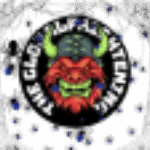Well, I thought that I’d talk about popular novels today, and why you should focus on learning about your own sensibilities rather than just following whatever is trendy. And, yes, even if you enjoy what is trendy right now, then some of what I’m going to say probably will apply to you at some point in the future.
After getting back into reading novels (and the occasional novella) in January after taking about five years off from the medium (due to burn-out from binge-reading in 2018-20), I was surprised to see lots of Youtube videos about popular modern fiction.
To my surprise, the popular genre these days seems to be fantasy-romance (or “romantasy“). It’s a world apart from the doorstopper-sized thriller novels (by Dan Brown, Lee Child, Stieg Larsson etc…) which were the popular general fiction genre during the 2000s. And, as someone who was born in the late 1980s, I’m annoyed that I wasn’t older during that decade because – even from second-hand bookshops back when I was a teenager – it was clearly a decade when horror fiction, especially the “Gloomy cover art and gruesome monster/slasher stories” type of it, was wildly popular 🙂 In fact, at least half of the novels I read for fun during the first half of my teenage years were old 1980s horror novels.
But 1980s horror fiction also offers a great example of why you shouldn’t just focus on whatever is popular at the moment. At some point during the early-mid 1990s, mainstream publishing turned its back on horror fiction. Stephen King still got published. Horror-adjacent genres like urban fantasy and serial killer-themed crime-thrillers also did well, but many 1980s horror authors switched to other genres for at least a while. Fortunately, the second-hand market was still there during the 2000s and major bookshops also still begrudgingly included a slender “horror” shelf as well.
Yes, horror fiction has recovered slightly since then and there’s actually a fairly decent indie scene too. Plus, modern 1980s-style indie horror novels like David Sodergren’s “Night Shoot” and Judith Sonnet’s “Hell: City Of The Killing Dead” make even the grisliest 1980s horror fiction seem tame, peaceful and PG-rated by comparison…
And medium-sized publishers also publish horror these days – case in point, the book I’m reading at the moment – “The House Of Last Resort” (2024) by Christoper Golden – was published by Titan Books. From what I’ve read so far, it seems to be a fairly standard haunted house story – but with moderately fast-paced third-person narration and an interesting Sicilian setting. It’s just a fun, and very readable, eerie novel about a creepy mansion. And it’s cool that it was actually published 🙂 In 2024 🙂
Still, the point is that – like any major industry – the publishing industry is a fickle thing and what is popular will change over time. Give it another ten or twenty years, and “romantasy” will probably just be seen as a “niche” genre or an “old” genre. If you only read what is popular or trendy, then you are going to get left behind at some point.
So, it’s a lot better to focus on whatever you are actually interested in reading. For example, when I think of books, I usually think of a collection of – mostly second-hand – paperbacks with gnarly, cool and/or gloomy cover art. A mixture of horror, thrillers and maybe the occasional historical detective/thriller novel, sci-fi novel or urban fantasy novel as well. That’s basically my “to read” pile at the moment. None of these are “popular” books, but they are what I enjoy reading.
Publishing is a business and, like the videogame industry, they will heavily focus on whatever is popular at the moment because it sells well. In the 1920s-50s, it was pulp detective fiction. In the 1960s-80s, it was what the internet now calls “men’s adventure” fiction. In the 1980s, it was awesome horror fiction. In the 2000s, it was tome-sized thriller novels and maybe fantasy genre-adjacent YA books (eg: Harry Potter, Twilight etc...). In the 2010s, it seems to have been spicy “Fifty Shades” type novels and police procedural/detective novels with grey covers. And, in the 2020s, it seems to be “romantasy”.
Thanks to things like second-hand shops, indie publishing etc… you don’t have to read what is popular. Even twenty years ago, you didn’t have to – thanks to second-hand books. And, whilst reading what you actually enjoy might be a lonelier path than joining in with “BookTok” or “BookTube” or whatever, you’ll gradually gain more of a sense of what novels you are likely to enjoy – meaning that you’ll end up getting a lot more enjoyment out of the medium.
It’ll also, paradoxically, make you more adventurous with your reading as well. Since, once you get a sense of what you actually enjoy, then you’ll search by this as much – or more – as you search by author. Case in point, my latest order of second-hand books at the time of writing included two books by authors I hadn’t heard of before because they were writing “Doctor Who” spin-off novels which were going cheap.
Reading what you enjoy, rather than what is popular at the moment, can be a lonely experience but you end up gaining a much better sense of your tastes and sensibilities, which makes book mean more to you in a way that is pretty much specific to you. And you are at much less risk of being “left behind” when the publishing industry becomes obsessed with another genre.
———–
Anyway, I hope that this was interesting 🙂





